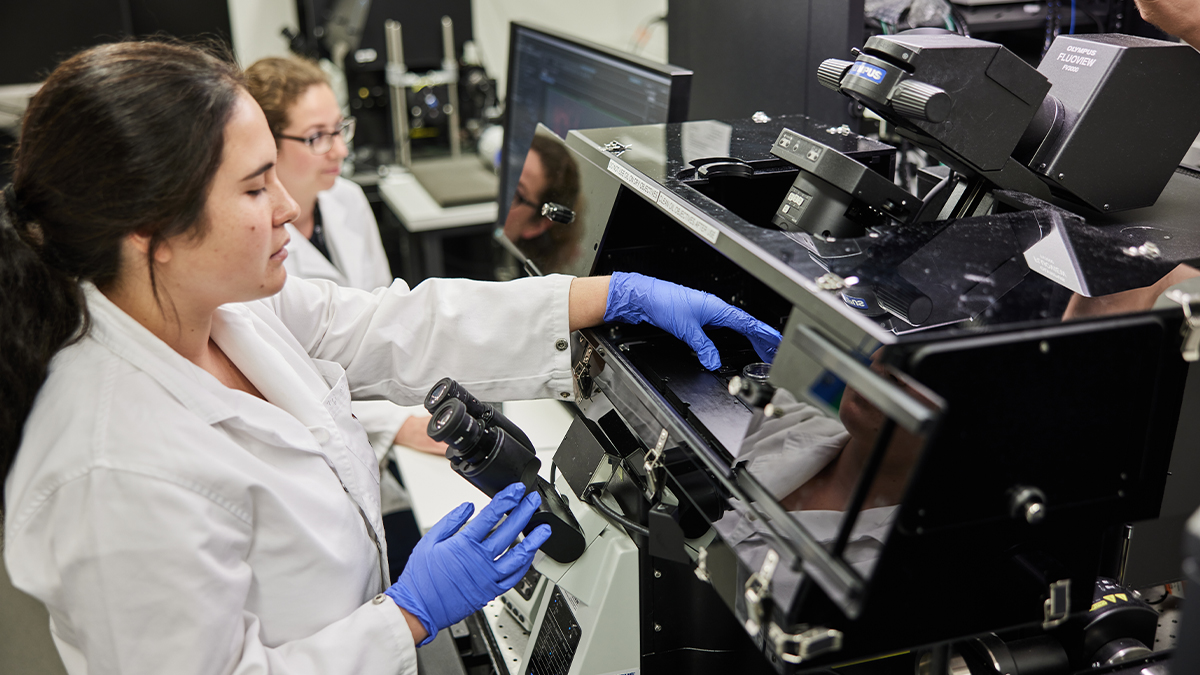
UNSW researchers and students will work alongside clinicians in the Integrated Acute Services Building from mid 2024.
The Acute Services Building (ASB) is part of the Randwick Health & Innovation Precinct. In its eastern extension, known as the Integrated Acute Services Building (IASB), UNSW will house state-of-the-art research, clinical innovation, biomedical and teaching facilities across 10 floors.
Three floors will be dedicated to biomedical engineering, led by UNSW’s Tyree Foundation Institute of Health Engineering (IHealthE). These spaces will facilitate partnerships in tech solutions for diagnosis, treatment and prevention of a wide range of conditions, with researchers and clinicians sharing ideas, prototypes and data analyses.
Such collaborations will help uncover unmet clinical needs and design innovative solutions to improve patient outcomes, says UNSW’s Professor Laura Poole-Warren, co-Director of the Tyree Foundation Institute of Health Engineering.
“Co-location and collaboration will help us show clinicians what’s feasible and demonstrate potential tech solutions. This is a space for us to engage directly with clinicians, patients, community and even industry, if appropriate,” she says.
Space to design and prototype clinical ideas
On level one, a dry clinical prototyping lab will promote co-design of medical technology, such as diagnostic devices, implants, catheters and surgical robots. This level includes a training facility for procedures, such as vascular surgery, flexible meeting rooms and collaboration spaces.
Its co-location with operating theatres will encourage clinicians to explore innovative solutions. For example, access to an anatomical printer will enables them to visualise different surgical interventions.
The floor will also be home to an undergraduate cohort of health technology innovation students.
The messy work of prototyping
Bioengineering spaces on level two will enable the manufacturing of new clinical solutions. Engineers can access cutting, drilling and sewing machines, bioprinters and other devices to rapidly build prototypes.
With a biospecimen laboratory next door, researchers and clinicians will have access to tissue specimens, allowing them to create 3D tissue and disease models using ethically sourced samples from patients. Clinicians can investigate personalised drug therapies or see how pathologies might influence anatomical structures.
A connected health floor to support patient care
On level three, researchers can access ethically sourced information and technology to support patients through sensors, devices and data generation. Computational modelling and analytics will be used to analyse data, show trends and make predications.
Researchers will work with the ASB’s Community Management Centre (CMC) to support the hospital’s tele-clinical, virtual care and remote monitoring capabilities. The CMC supports patients at home, monitoring conditions, such as stroke rehabilitation and gestational diabetes. This data can also be repurposed in predictive models for diagnosis or prevention.
Clinical care teams can also explore data visualisation through augmented and virtual reality to view data in new meaningful ways.
Co-locating these three floors with the hospital ensures our research will be practical and needs based, says UNSW’s Gemma Ashton, IHealthE’s Chief Operation Officer, who worked on the design of the three floors.
“Working directly with clinicians to identify their needs and produce prototypes will accelerate the translation for patients’ benefits. We’re super-excited to be part of the hospital community. It’s going to be incredible.”
The IASB and IHealthE’s spaces are due to open in mid 2024.
Picture above: Hyperspectral imaging is a new diagnostic technique that Biosensing and Imaging researchers are developing to a 'fingerprint' to allow differentiation between healthy and non-healthy cells or tissues. The technique uses light to capture the native fluorescence of cells, allowing biochemical and molecular information to be obtained benefitting label-free, non-invasive diagnostics.
- Log in to post comments
